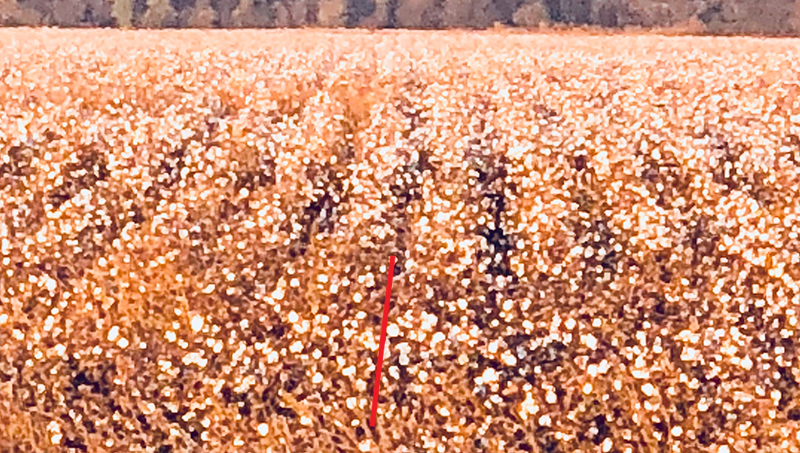
This no-till cotton field was planted with two different planters, two operators. The arrow is the dividing line. The planters were both equipped with Keetons + Mojos, new opener blades, etc. The one on the right side had Thompson closing wheels with toe-out wedges, the one on the left had OEM smooth rubber closing wheels. However, given how marginal (dry) the soil was, we don’t think this was important. The key difference was in the adjustment. The right side was planted by a guy who’s exceptionally meticulous with seeding operations and spent the time getting the planter level to slightly nose up and getting the gauge tires up tight against the blades. The guy on the left, whose crop it was, was in more of a hurry and didn’t bother leveling the planter (it was nose-down) and had gaps between the gauge tires and the blades. (When it’s dry and dusty on top, especially for a shallow-planted crop like cotton, it’s essential to have that dry, loose material pinned down under the gauge tire, and not let it fall in ahead of the seed. And having the planter slightly nose-up, or at least not nose-down, makes the seed tube more vertical, for less chance of this happening also.)
The farmer who did the right side, and who knows cotton, thinks there’s 250 lbs./a difference ($200/a) between the two—simply from a few adjustment details! What a payoff. Far fewer weed escapes where the stand was good, also. (The difference was more visible earlier in the season, but we don’t have pics. The farmer who owned the crop claimed that he couldn’t get accurate yield information between the two because of some flooded spots. We suspect that he really doesn’t want to know just how much his haste cost him.)
